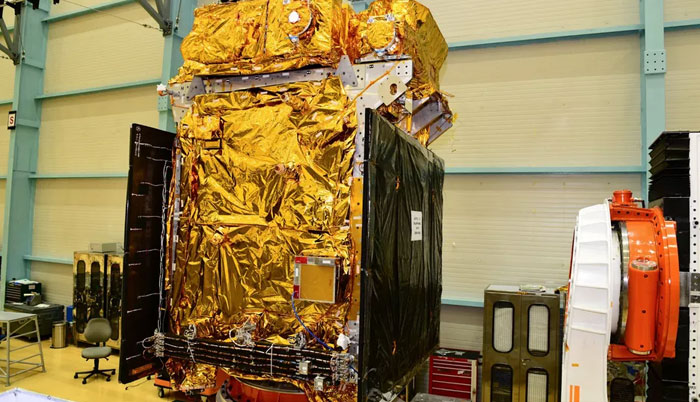![]() Home > Space & Science
Home > Space & Science
India to launch Aditya-L1, its 1st solar probe, on Sept. 2

India’s Aditya-L1 sun-studying spacecraft is scheduled to launch on Sept. 2, 2023. (Image credit: VDOS/URSC/ISRO)
![]() August 29th, 2023 | 15:37 PM |
August 29th, 2023 | 15:37 PM | ![]() 2514 views
2514 views
INDIA
Aditya-L1 is scheduled to lift off Saturday (Sept. 2) at 2:20 a.m. EDT (0620 GMT).
India will launch its first sun-studying spacecraft this weekend, if all goes according to plan.
The Aditya-L1 solar observatory is scheduled to launch Saturday (Sept. 2) at 2:20 a.m. EDT (0620 GMT; 11:50 local India time), the Indian Space Research Organization (ISRO) announced on Monday (Aug. 28).
The spacecraft will lift off atop a Polar Satellite Launch Vehicle from Satish Dhawan Space Centre, on the island of Sriharikota, just off India's east coast. You'll be able to watch the action here at Space.com, courtesy of ISRO.
Aditya-L1 will initially head to low Earth orbit, where its various systems will get an in-space checkout from the mission team. If all is well, the spacecraft will gradually loosen its orbit, eventually breaking free of our planet's gravitational pull. Once free from Earth's grip, Aditya-L1 will make its way to the Earth-sun Lagrange Point 1, a gravitationally stable spot about 1 million miles (1.5 million kilometers) away.
"A satellite placed in the halo orbit around the L1 point has the major advantage of continuously viewing the sun without any occultation/eclipses," ISRO officials wrote in an Aditya-L1 mission description. "This will provide a greater advantage of observing the solar activities and its effect on space weather in real time."
That destination explains the "L1" part of the mission's name. "Aditya," meanwhile, translates to "sun" in Sanskrit.
Once at L1, the probe will use its seven science instruments to study the sun in a variety of ways. For example, Aditya-L1's data could help researchers better understand the dynamics of solar flares and massive eruptions of superhot solar plasma known as coronal mass ejections, ISRO officials said.
The mission could also shed light on why the sun's outer atmosphere, known as the corona, is so much hotter than its surface — about 1.8 million degrees Fahrenheit (1 million degrees Celsius), compared to just 10,000 degrees F (5,500 degrees C) or so.
India's launch of the roughly 3.8-billion-rupee ($45 million US) Aditya-L1 mission will follow closely on the heels of the nation's great success on the moon: The country's Chandrayaan-3 lander-rover duo aced their landing on Earth's nearest neighbor last Wednesday (Aug. 23).
Chandrayaan-3 has since been exploring the moon's south polar region, an area that hadn't hosted a surface mission until now. Exploration advocates are intrigued by the moon's polar regions because they're thought to host large amounts of water ice, a key resource that could support human outposts.
Chandrayaan-3's Vikram lander and Pragyan rover are expected to operate for about one lunar day (14 Earth days) before being silenced by the bitter cold and darkness of the long lunar night.
Source:
courtesy of SPACE
by Mike Wall
If you have any stories or news that you would like to share with the global online community, please feel free to share it with us by contacting us directly at [email protected]